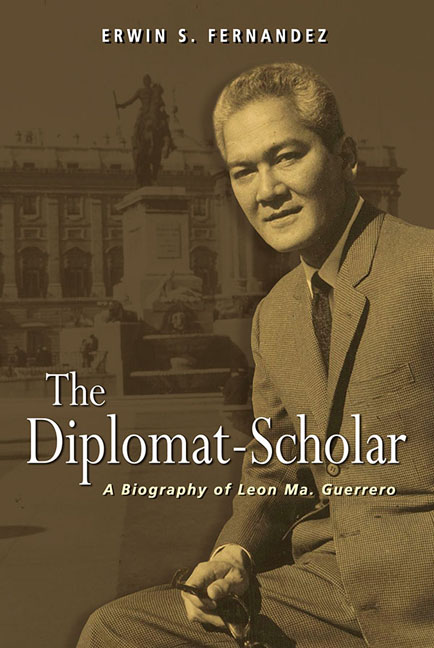Book contents
- Frontmatter
- Dedication
- Contents
- Preface
- Prologue
- Chronology
- I Ermita and Santa Cruz to Intramuros: Between Literary and Legal Career
- 1 Bourgeois Ermita: Birth and Boyhood
- 2 Education under American Jesuits
- 3 The Humorist as Critic, Writer and Actor
- 4 Juggling Law and Journalism on the Eve of War
- II To Tokyo and Back: The Making of a Diplomat
- III Going In, then Out of the Political Jungle: Padre Burgos to Arlegui
- IV London and Madrid: The Philippines in a Resurgent Asia
- V New Delhi to Belgrade: The Philippines towards Non-Alignment
- Epilogue
- Glossary
- List of Abbreviations
- Bibliography
- Index
- About the Author
1 - Bourgeois Ermita: Birth and Boyhood
from I - Ermita and Santa Cruz to Intramuros: Between Literary and Legal Career
Published online by Cambridge University Press: 12 January 2018
- Frontmatter
- Dedication
- Contents
- Preface
- Prologue
- Chronology
- I Ermita and Santa Cruz to Intramuros: Between Literary and Legal Career
- 1 Bourgeois Ermita: Birth and Boyhood
- 2 Education under American Jesuits
- 3 The Humorist as Critic, Writer and Actor
- 4 Juggling Law and Journalism on the Eve of War
- II To Tokyo and Back: The Making of a Diplomat
- III Going In, then Out of the Political Jungle: Padre Burgos to Arlegui
- IV London and Madrid: The Philippines in a Resurgent Asia
- V New Delhi to Belgrade: The Philippines towards Non-Alignment
- Epilogue
- Glossary
- List of Abbreviations
- Bibliography
- Index
- About the Author
Summary
Before the coming of the Spaniards, there was Lagyo, a Tagalog coastal community. On the afternoon of 21 May 1571, Legazpi's armed expeditionary troop pacified it in the name of Spain. They stumbled upon a group of natives paying homage to a wooden anito, joined them in tribute and carried it to their camp claiming that it was the carved image of the Virgin Mary. The image became the Nuestra Señora de Guía, patroness of the coastal arrabal (later of the Manila-Acapulco galleons) where a Romanesque church was built from the sand of the seashore that saw fishermen unloading from their boats the day's catch. A hermit monk was said to have stayed and died there and, in his honour, the small fishing community was absorbed into a larger village named Hermita in 1591. Over time the “h” disappeared, and Hermita became Ermita.
The coming of the Americans would bring more changes. Seventeen years after Dewey's naval squadron destroyed the Spanish flotilla on Manila Bay to annex the Philippines in 1898, the country continued to suffer from the ravages of the Philippine-American War. Officially declared over in 1902, the war continued in other parts of the archipelago including the island of Mindanao between 1903 and 1916. The war decimated the population, as did disease and famine, in the countryside. In Batangas where hamletting was employed, at least 100,000 died. In Manila, it was relatively peaceful. The Americans succeeded in courting the elite who cooperated in the establishment of a colonial government for eventual self-rule. The passage of the Philippine Bill of 1902 or the Cooper Act provided for the administration of civil government. The Filipino elite gained the power to run the affairs of the country, although the Americans still held sensitive positions in the government. In 1907, an elective Philippine Assembly was inaugurated with eighty-four members from the thirty-four provinces. Then, the Jones Law mandated the creation of a Philippine Senate in 1916, which superseded the Philippine Commission.
- Type
- Chapter
- Information
- The Diplomat-ScholarA Biography of Leon Ma. Guerrero, pp. 19 - 29Publisher: ISEAS–Yusof Ishak InstitutePrint publication year: 2017



